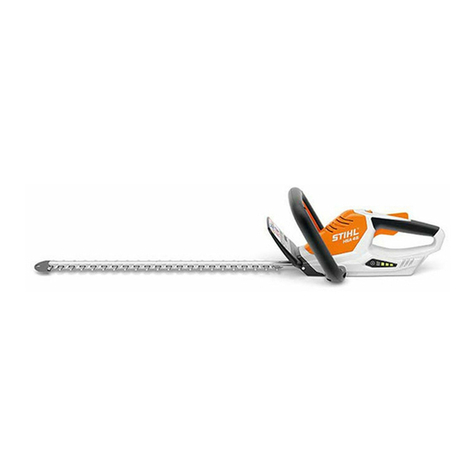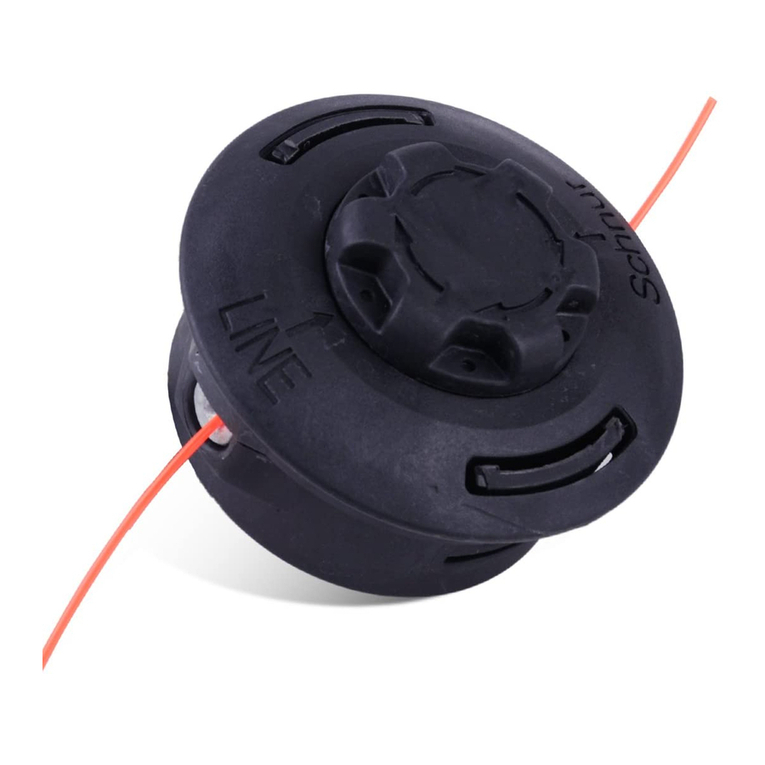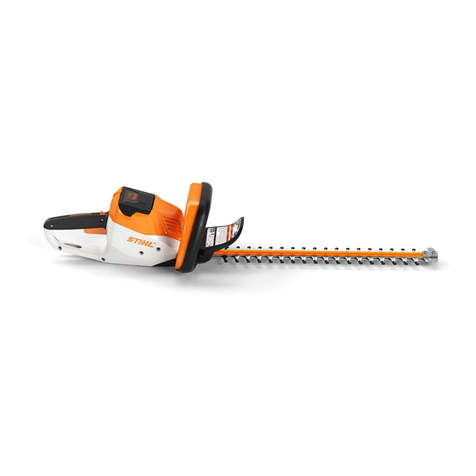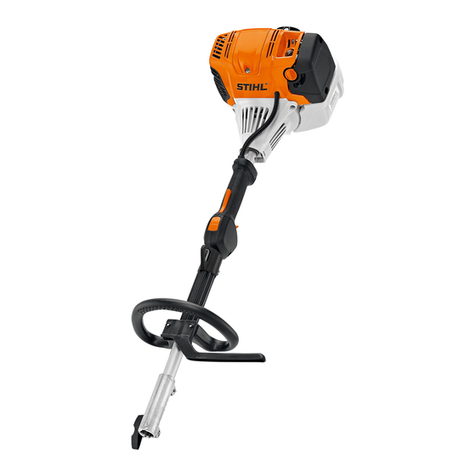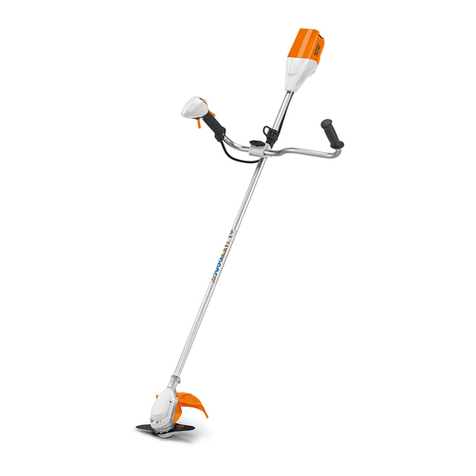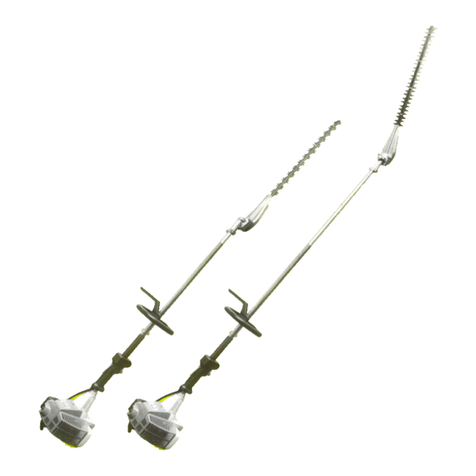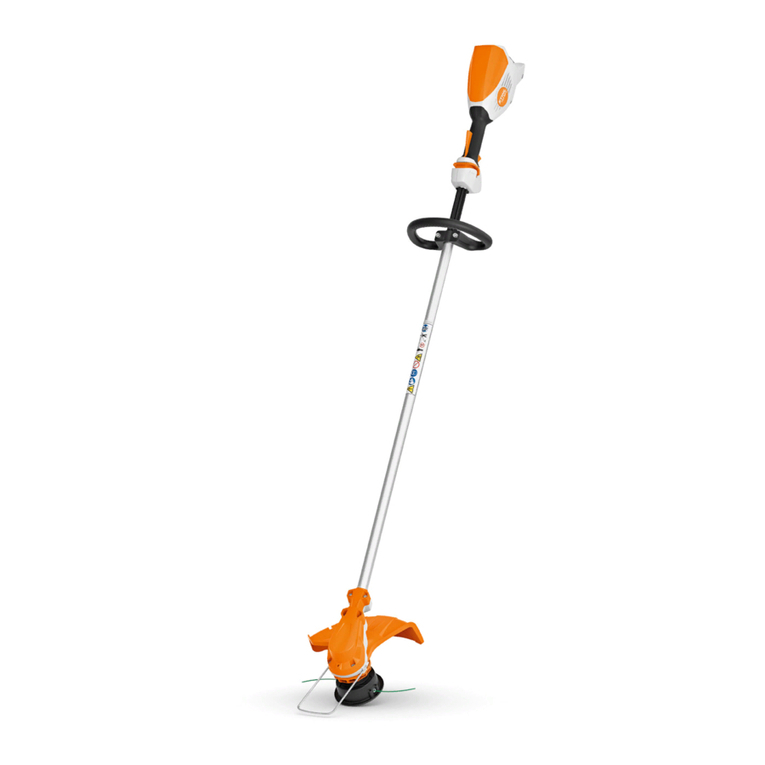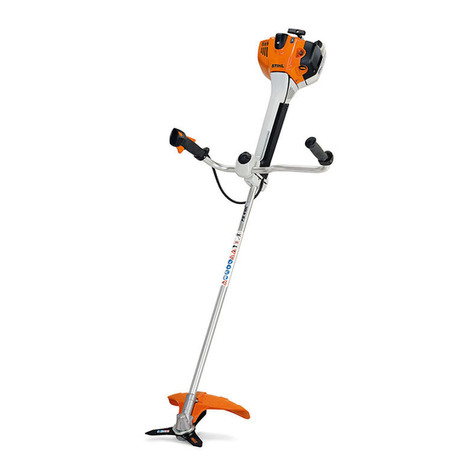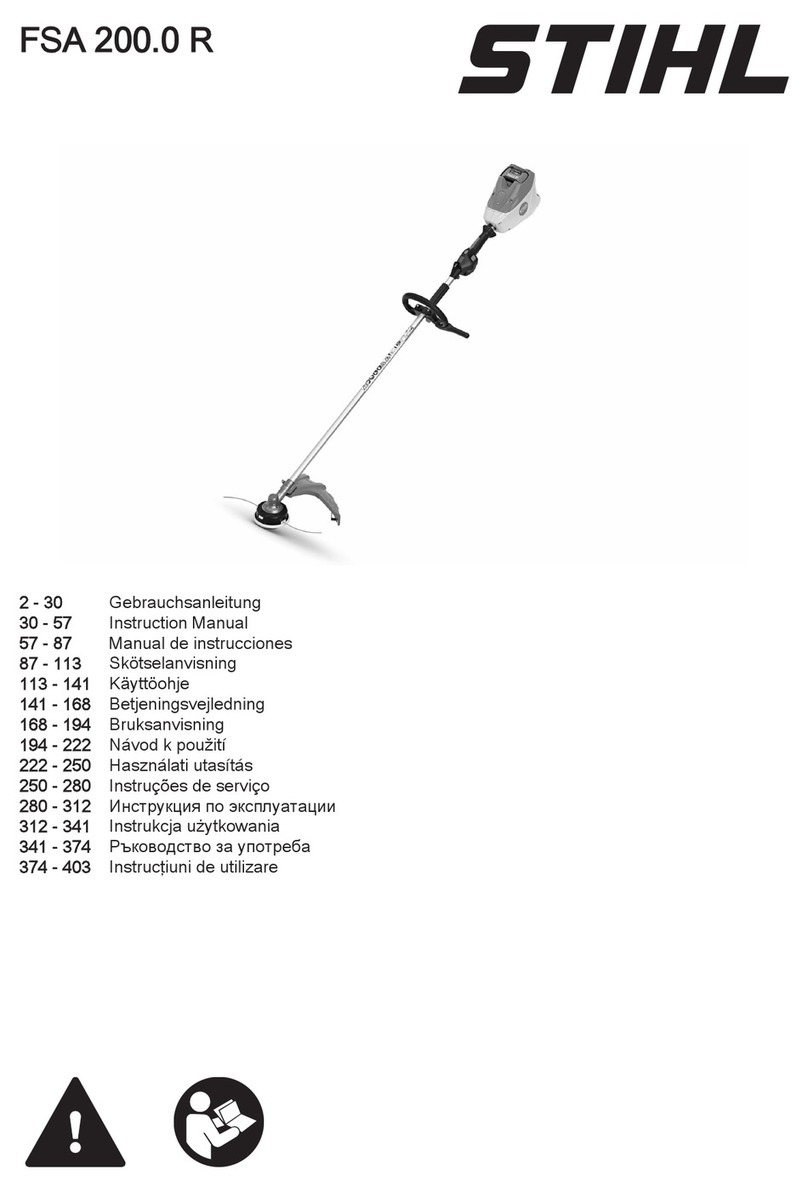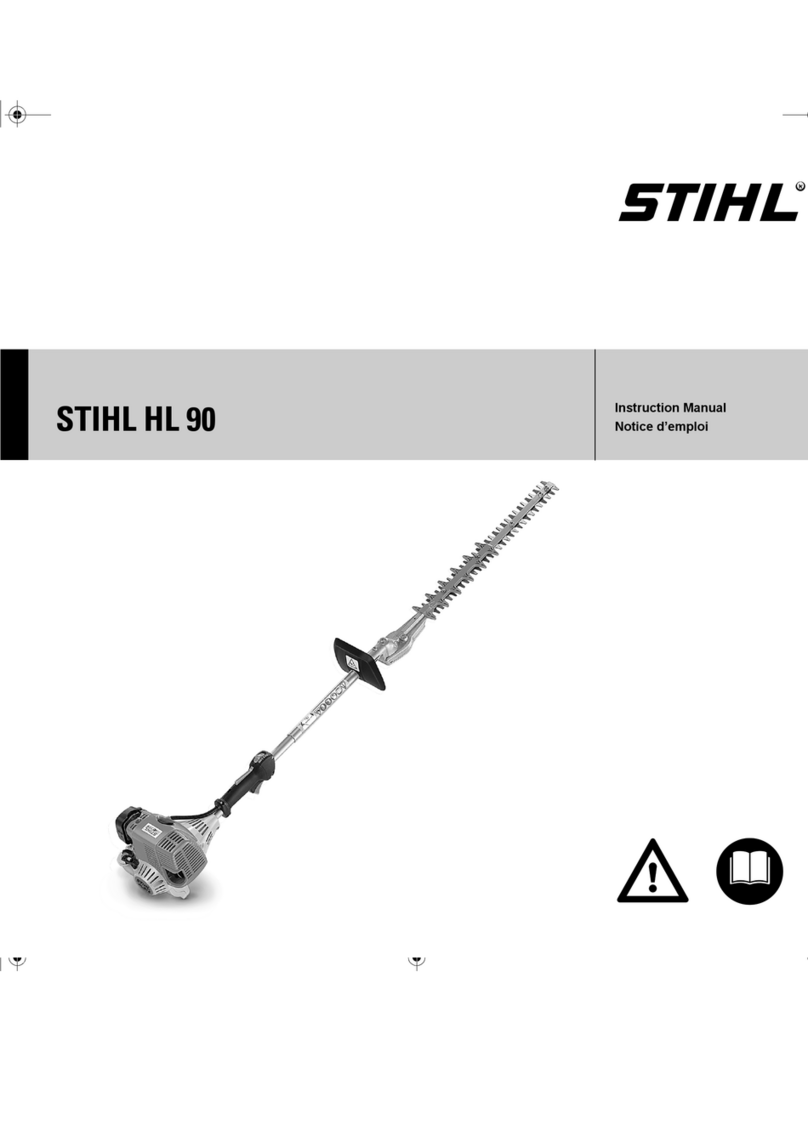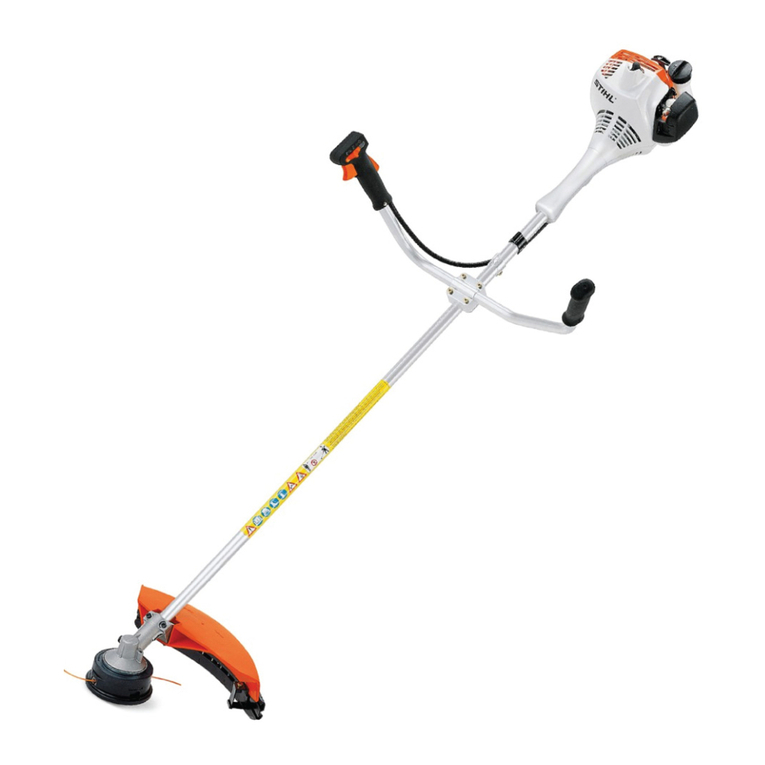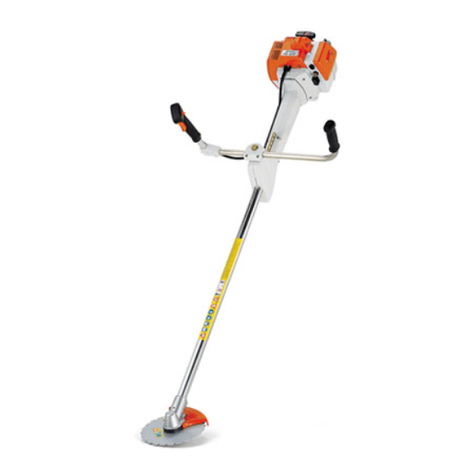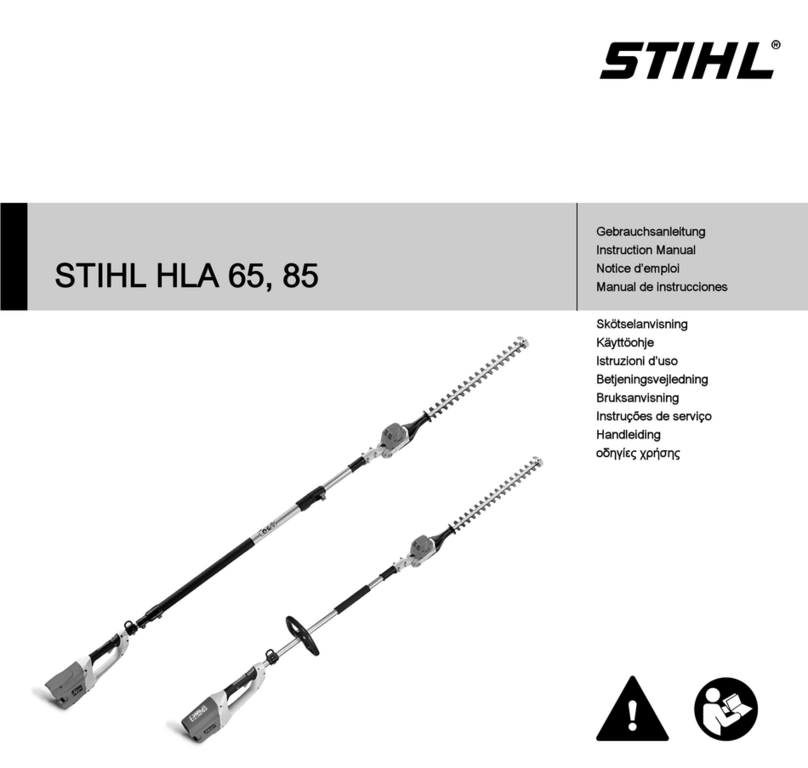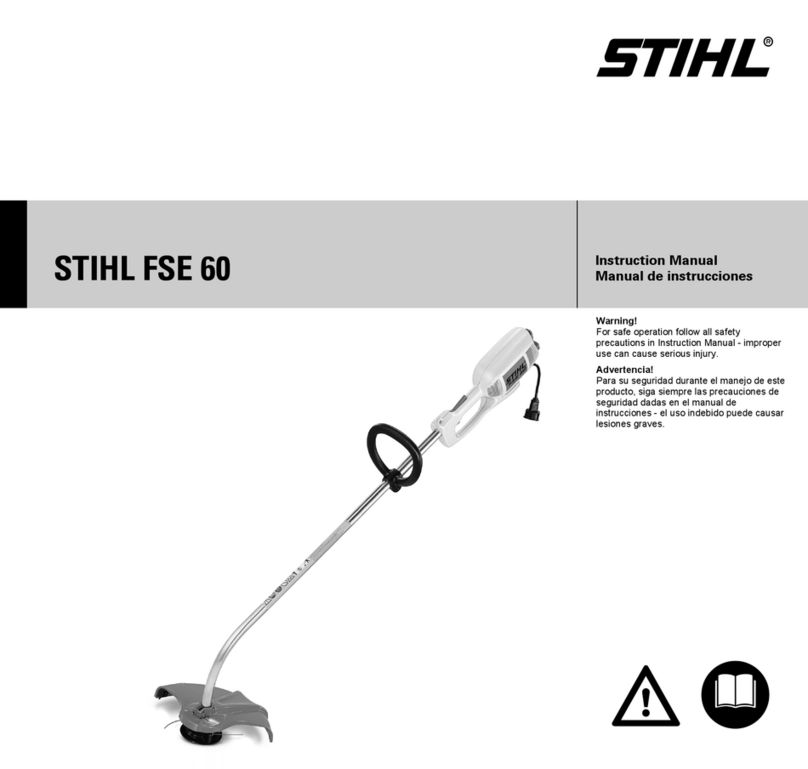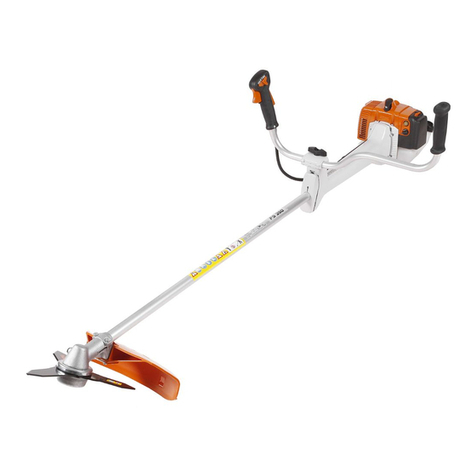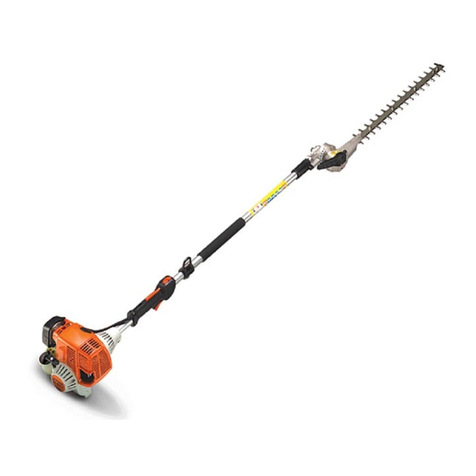
HL
English
5
It may be carried only in a horizontal
position. Grip the shaft in a manner that
the machine is balanced horizontally.
Keep the hot muffler away from your
body and the cutting attachment behind
you.
WARNING
To reduce the risk of burn injury, do not
touch hot parts of the machine and the
gear housing when they are hot.
WARNING
When transporting it in a vehicle,
properly secure it to prevent turnover,
fuel spillage and damage to the unit.
On machines with an adjustable cutter
bar: Make sure the cutter bar is secured
in position. See chapter in this
instruction manual entitled "Adjusting
the Cutter Bar." On machines with a
transport position: Move cutter bar to
transport position and secure.
Before Starting
WARNING
Always check your power tool for proper
condition and operation before starting.
Never attempt to modify the controls or
safety devices.
WARNING
Never operate your power tool if it is
damaged, improperly adjusted or
maintained, or not completely or
securely assembled.
WARNING
The cutting attachment must be properly
tightened and in safe operating
condition. Inspect for loose parts (nuts,
screws, etc.) and for cracked, bent,
warped or damaged blades. Regularly
check the condition of the cutting blades
– with the engine stopped! Replace
damaged cutting blades before using
the power tool. Always keep blades
sharp.
Keep the handles clean and dry at all
times; it is particularly important to keep
them free of moisture, pitch, oil, fuel mix,
grease or resin in order for you to
maintain a firm grip and properly control
your power tool.
STIHL recommends that you always
spray the cutting blades with STIHL
resin solvent before starting work – with
the engine stopped! You can obtain this
protective spray from your dealer. Apply
generously.
Adjust harness and hand grip to suit
your size before starting work. To be
better prepared in case of an
emergency, practice releasing the unit
from the harness as quickly as possible.
Starting
On machines with an adjustable cutter
bar: Secure the cutter bar in the starting
position as described in the chapter
"Starting / Stopping the Engine." If this
starting position is not the desired
cutting position, you will then need to
carefully adjust the machine to the
desired position once the engine has
returned to idle and the blades are no
longer moving.
On machines with a defined transport
position (cutter bar folded against the
drive tube): Never start the machine in
the transport position, since the blades
are not engaged in that position and you
therefore cannot visually check to see
that they will be stopped at idle when
you start to adjust the cutter bar to the
desired cutting position (where the
blades are engaged).
Start the engine at least 10 feet (3 m)
from the fueling spot, outdoors only.
For specific starting instructions, see the
appropriate section of your basic power
tool and your hedge trimmer attachment
manuals.
Place the power tool on firm ground or
other solid surface in an open area.
Maintain good balance and secure
footing.
WARNING
To reduce the risk of injury from loss of
control, do not attempt to "drop start"
your power tool.
WARNING
To reduce the risk of injury from loss of
control, be absolutely sure that the
cutting tool is clear of you and all other
obstructions and objects, including the
ground, because when the engine starts
at starting-throttle, engine speed will be
fast enough for the clutch to engage and
move the blades on the cutting tool.
